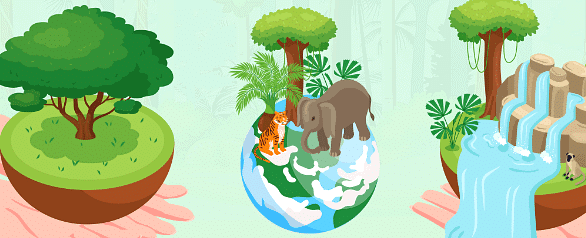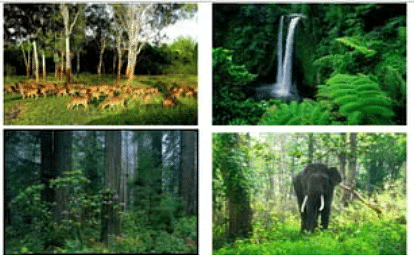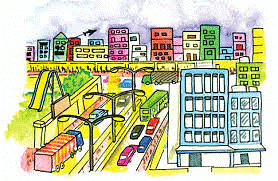Land, Soil, Water, Natural Vegetation and Wildlife Resources Class 8 Worksheet Social Science
| Table of contents |

|
| MCQ |

|
| Name in One Word |

|
| True or False |

|
| Short Answer Questions |

|
| Long Answer Questions |

|
MCQ
Q1: What is the primary factor influencing the growth of vegetation?
(a) Human interference
(b) Temperature and moisture
(c) Altitude
(d) Soil fertility
Q2: Which method of irrigation is most effective in dry regions with high rates of evaporation?
(a) Sprinkler irrigation
(b) Drip irrigation
(c) Surface irrigation
(d) Sub-surface irrigation

Q3: What is the main reason for the uneven distribution of population around the world?
(a) Variation in climate
(b) Availability of land and water resources
(c) Technological advancements
(d) Cultural differences
Q4: Which factor is NOT responsible for soil degradation?
(a) Deforestation
(b) Overgrazing
(c) Afforestation
(d) Soil erosion
Q5: Which of the following is a method of water conservation?
(a) Deforestation
(b) Over-exploitation of water sources
(c) Discharge of untreated sewage into water bodies
(d) Water harvesting
Name in One Word
Q1: The thin layer of grainy substance covering the surface of the earth.
Q2: The process of collecting rainwater for future use.
Q3: The life supporting system consisting of living beings and their environment.
Q4: Areas of short stunted trees and grasses in regions of moderate rainfall.
Q5: International convention that lists several species in which trade is prohibited.

True or False
Q1: Mulching helps to retain soil moisture.
Q2: Land degradation is caused only by natural factors.
Q3: Afforestation is a method used to conserve land resources.
Q4: Overuse of chemical fertilizers and pesticides can lead to soil depletion.
Q5: Forest cover is vanishing rapidly due to human activities.
Short Answer Questions
Q1: What method of soil conservation is used in coastal and dry regions?
Q2: What makes the soil fertile?
Q3: Why is ocean water not fit for human consumption?
Q4: Which are the two main climatic factors responsible for soil formation?
Q5: What do you mean by shelterbelt?
Q6: What are the major types of vegetation in the world?
Q7: Which country has the highest percentage of land under cropland?
Q8: What are the major threats to soil as a resource?
Q9: What percent of fresh water is fit for human use?
Q10: What affects the rate of humus formation?

Long Answer Questions
Q1: Explain the role of soil conservation methods in preserving the environment and sustaining agriculture.Q2: Discuss the importance of water conservation measures in mitigating water scarcity and preserving freshwater resources.
Q3: Analyze the factors contributing to the loss of natural vegetation and wildlife, and propose strategies for their conservation.
Q4: Describe the significance of afforestation and reforestation in combating climate change and mitigating environmental degradation.
Q5: Discuss the socio-economic implications of land degradation and the importance of sustainable land management practices.
You can find Worksheets Solutions here: Worksheet Solutions: Land, Soil, Water, Natural Vegetation and Wildlife Resources
|
69 videos|431 docs|46 tests
|
FAQs on Land, Soil, Water, Natural Vegetation and Wildlife Resources Class 8 Worksheet Social Science
| 1. How do land, soil, water, natural vegetation, and wildlife resources contribute to the ecosystem? |  |
| 2. What are the main threats to land, soil, water, natural vegetation, and wildlife resources? |  |
| 3. How can we conserve land, soil, water, natural vegetation, and wildlife resources? |  |
| 4. What role do land, soil, water, natural vegetation, and wildlife resources play in agriculture? |  |
| 5. How can human activities impact land, soil, water, natural vegetation, and wildlife resources? |  |
















